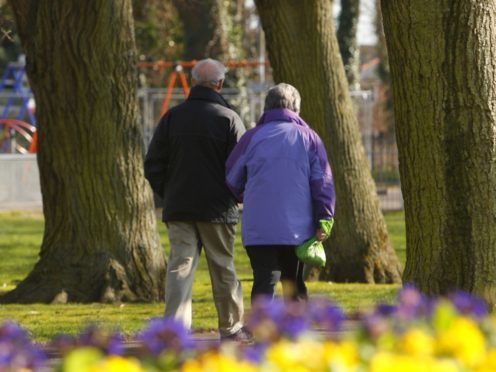Short bouts of light intensity exercise could lower the risk of early death among older men, a new study suggests.
Guidance from the UK’s chief medical officers suggests that older people should aim to get at least 150 minutes of moderate intensity exercise in bouts of 10 minutes or more.
But now researchers have said that the overall volume of activity is key, rather than the sessions of at least 10 minutes.
The comments come after they found that even just a few minutes at a time of any level of physical activity, including of light intensity, is linked to a lower risk of death in older men.
1 in 3 adults in England don't manage 30 minutes of physical activity a week – why not start walking for just 10 minutes a day and see the benefits https://t.co/EK59FcxTLe #WalkingforHealth pic.twitter.com/E2GnLzoGfG
— SWB CCG (@SWBCCG) February 19, 2018
The new study, published in the British Journal of Sports Medicine, drew on data from the British Regional Heart Study.
The research involved almost 8,000 participants from 24 British towns, when the study started in 1978-80.
Between 2010 and 2012 the 3,100 surviving participants aged 71 to 92 were invited for a check-up which included a physical examination and questions about their lifestyles.
They were also asked to wear an accelerometer which tracked the volume and intensity of their physical exercise for a week.
By 2016, 194 deaths had occurred in 1,181 men without pre-existing cardiovascular disease.
The authors found that the total volume of physical activity, from light intensity upwards, was associated with a lower risk of death from any cause.
Each additional 30 minutes a day of light intensity activity – such as gardening or taking the dog for a walk – was associated with a 17% reduction in the risk of death.
They found that “lower mortality risks were gained across the spectrum of activity levels, not confined to a particular threshold level”.
Did you know that doing regular physical activity can lower risk of breast cancer by up to 20% & colon cancer by up to 50%? Click here https://t.co/O3Dmk5VLQu to find local activities that can help get you moving #LiveWell @ActiveEssex 🏃♀️🧘♂️🧗♀️ pic.twitter.com/yWu1u6bdt4
— NHS Mid Essex CCG (@MidEssexCCG) February 17, 2018
And there was no evidence to suggest that accumulating moderate to vigorous activity in bouts lasting more than 10 minutes lowered the risk of mortality compared with accumulating activity in shorter bouts, they added.
They added that sporadic bouts of activity seemed easier to achieve as 66% of men achieved a weekly total of 150 minutes of moderate to vigorous physical activity in this way while only 16% managed to do so in bouts of 10 or more minutes.
The authors concluded: “[These] findings could refine physical activity guidelines and make them more achievable for older adults with low activity levels: stressing the benefits of all activities, however modest, from light intensity upwards; second, encouraging accumulating activity of all intensities without the need to sustain bouts of 10 min or more.”
